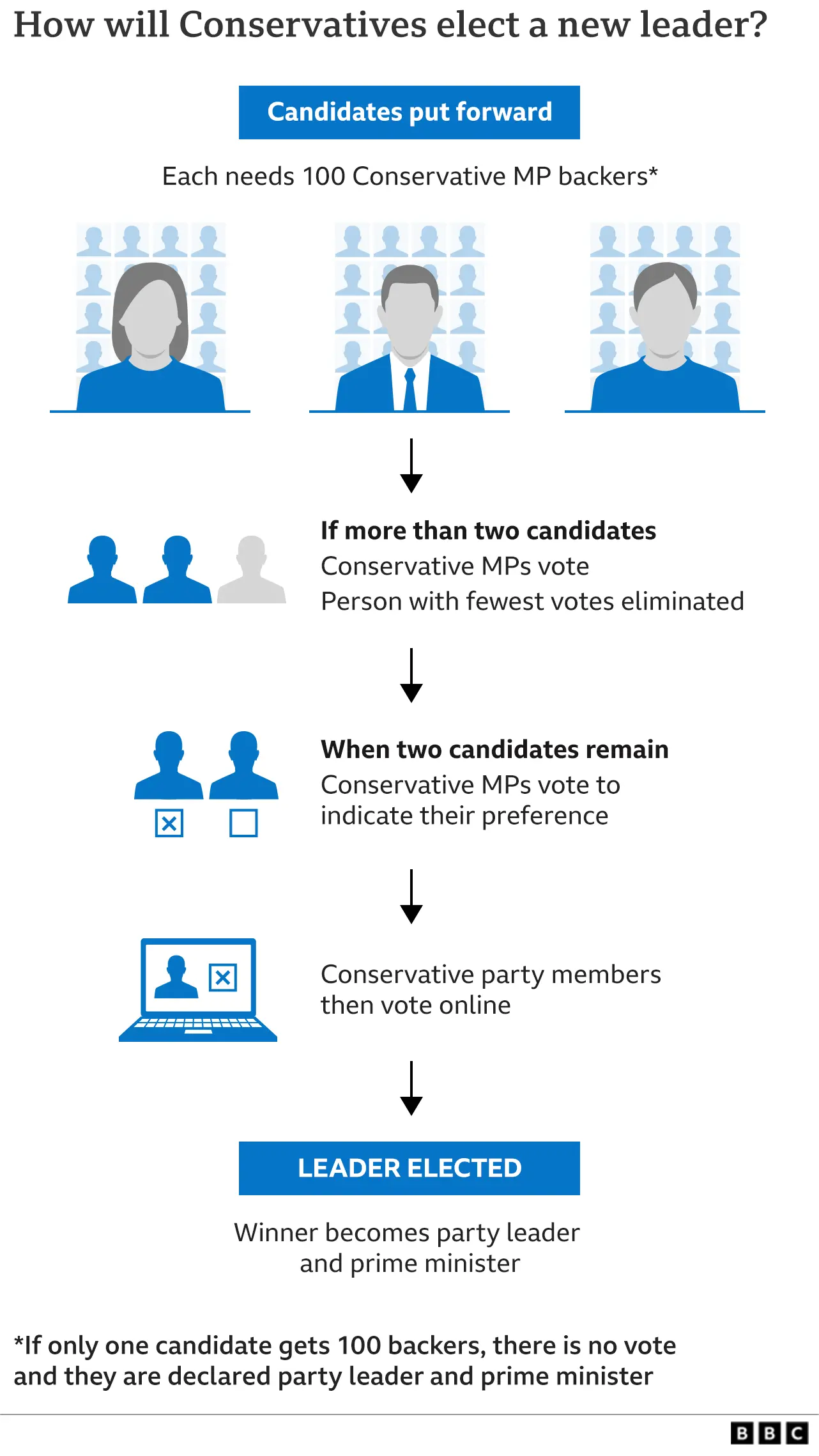Tory leadership: How was the new UK prime minister chosen?
 Getty Images
Getty ImagesRishi Sunak will be the new prime minister after he won the Conservative Party leadership election.
The contest followed the resignation of Liz Truss as prime minister.
Mr Sunak will become the fifth Tory prime minister in six years.
How did the Conservatives elect a new leader?
Nominations
Under the rules of the latest leadership contest, candidates needed to have the support of at least 100 Conservative MPs (not including themselves).
Rishi Sunak was the only one to reach that level and so became the party leader.
As there are currently 357 Tory MPs, a maximum of three candidates could have met the threshold.
The other contenders - Boris Johnson and Penny Mordaunt - both withdrew from the process.

Vote among Tory MPs
If more than one candidate had gained 100 nominations, there would have been a vote among Conservative MPs.
If there had been two candidates in that ballot, it would have been indicative. This means it would have shown who had the most support among MPs.
If there had been three candidates, the one with the fewest votes would have been eliminated, before an indicative vote would have been held.
Vote among party members
If two candidates had remained at the end of the ballots, members of the Conservative Party would have decided on the next leader and prime minister.
They would have taken part in an online vote to decide the winner.
How is the next prime minister appointed?
Rishi Sunak is now the leader of the party with the largest number of MPs in Parliament.
The King will therefore ask him to form a government, becoming the UK's next prime minister in the process.
How was Ms Truss chosen?
The summer leadership contest, which Ms Truss won, was held over three months.
Candidates were only able to enter the race if they had the backing of at least 20 Tory MPs.
Eight contenders emerged - including Ms Truss.
In the contest's first stage, Tory MPs chose two candidates to go forward to a vote of the wider membership of the party.
To do this, the Tory party's MPs whittled down the field with a series of votes.
Anyone who received fewer than 30 votes or came last in each round was eliminated. The process continued until the two final candidates - Ms Truss and former chancellor Rishi Sunak - remained.
In stage two, Conservative Party members chose the winner in a postal and online vote lasting several weeks.
When the result was announced on 5 September, Ms Truss won 81,326 votes among party members, compared with 60,399 for Mr Sunak.
Will there be a general election?
There isn't automatically a general election when a new prime minister is appointed.
If Mr Sunak decides not to call an early election, the next one does not have to be held until January 2025 at the latest.
